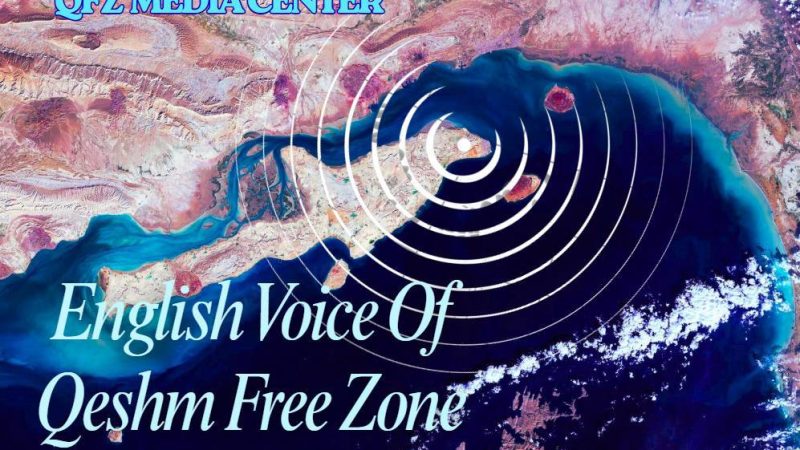Exploring Qeshm’s Ancient Architecture and Cultural Sites

Nestled in the heart of the Persian Gulf, Qeshm Island stands as a captivating destination rich in natural wonders, ancient architecture, and cultural heritage. As Iran’s largest island, Qeshm is not only a paradise for ecotourism but also a living museum that reflects centuries of maritime trade, religious coexistence, and local craftsmanship.
From ancient mosques and historical castles to traditional homes and coastal shrines, the island offers a unique insight into the architectural and spiritual legacy of southern Iran. This article explores the historical and cultural sites of Qeshm, offering visitors and researchers a deeper understanding of its timeless charm.
1. The Strategic and Historical Importance of Qeshm in the Persian Gulf
Located near the Strait of Hormuz, Qeshm Island has long held geopolitical and economic significance. As a hub for merchants and sailors traveling across the Persian Gulf, the island has absorbed diverse cultural influences from Persia, Arabia, India, and Africa — shaping its architecture and way of life.
Throughout its history, Qeshm has served as a trading post, a military stronghold, and a cultural bridge between civilizations. Many of the island’s historic buildings, shrines, and ports are remnants of these multifaceted roles.
2. Portuguese Castle (Qeshm Castle)
One of the most iconic historical landmarks in Qeshm is the Portuguese Castle, built in the early 16th century during the Portuguese occupation of the Persian Gulf. This fortress is made of coral stone and limestone, and its robust defensive walls and towers remain a testament to colonial maritime architecture.
The castle, located in Qeshm city, was strategically designed to guard the shipping lanes and was part of a network of Portuguese fortifications along Iran’s southern coast.
Keywords: Qeshm Portuguese Castle, historical sites in Qeshm, Persian Gulf architecture
3. Traditional Homes in Laft Village
Laft, one of the oldest villages on Qeshm Island, is known for its traditional wind-catchers (badgirs) — an ancient Persian architectural innovation used for cooling houses in hot, arid climates. The mud-brick homes in Laft reflect a blend of Persian and Arab styles and have stood the test of time for hundreds of years.
Walking through the narrow alleys of Laft feels like stepping into a historical tapestry, with cisterns, old mosques, and fishermen’s homes offering insight into local life and the cultural heritage of Qeshm.
Keywords: Laft village, Qeshm traditional architecture, windcatchers in Iran, cultural tourism Qeshm
4. The Shrine of Sayyed Mozaffar
Located near Laft, the Shrine of Sayyed Mozaffar is a spiritual landmark that draws both pilgrims and tourists. With its domed roof and modest design, the shrine is an example of local religious architecture and reflects the blend of Islamic and regional cultural practices.
It remains a peaceful space for reflection and an important symbol of community identity on the island.
5. Historic Cemeteries and Tombstones
Qeshm is home to ancient cemeteries with elaborately carved tombstones, especially in the villages of Guran and Tabl. These cemeteries offer anthropological insight into burial practices, religious beliefs, and social hierarchies of past centuries.
Some of the inscriptions on the stones are in ancient Persian and Arabic, and researchers consider these sites invaluable for understanding the region’s history.
Keywords: historical tombstones Qeshm, cultural sites Qeshm Island, Persian Gulf heritage
6. Historical Mosques of Qeshm
Among the island’s sacred architectural gems is the Historical Mosque of Tabl, believed to be over 300 years old. Its thatched roof and coral stone structure reflect both practical design for the climate and devotion to minimalist beauty.
Other notable mosques include those in the Salakh and Basaidu villages — offering examples of local adaptation of Islamic architecture in coastal environments.
7. Qeshm’s Ancient Shipbuilding Traditions
While not buildings in the traditional sense, the historical shipyards of Qeshm, especially in the village of Guran, are living monuments of intangible heritage. These sites showcase the island’s wooden boatbuilding traditions (Lenj) that have been passed down for generations.
Recognized by UNESCO as part of Iran’s intangible cultural heritage, these shipyards are essential to understanding the maritime culture of the Persian Gulf.
Keywords: Qeshm Lenj shipbuilding, Guran shipyard, cultural heritage Persian Gulf
8. Cultural Museums and Restoration Projects
Efforts have been made in recent years to preserve Qeshm’s cultural and architectural heritage through local museums and conservation initiatives. The Qeshm GeoPark Museum, while primarily focused on geology, also houses exhibitions about the island’s human history and architecture.
Community-based tourism has further supported the revival of traditional crafts, home restoration projects, and guided historical tours.
Exploring Qeshm Island’s ancient architecture and cultural sites offers more than just a visual journey — it’s a deep dive into the soul of a land shaped by centuries of interaction, resistance, and resilience. Whether you are an architect, historian, tourist, or cultural enthusiast, Qeshm provides a rare window into a world where tradition and modernity coexist in harmony.
From Portuguese forts and wind-catchers to ancient shrines and traditional shipyards, every corner of Qeshm tells a story — a story anchored firmly in the cultural and historical richness of the Persian Gulf.



















بدون Comment